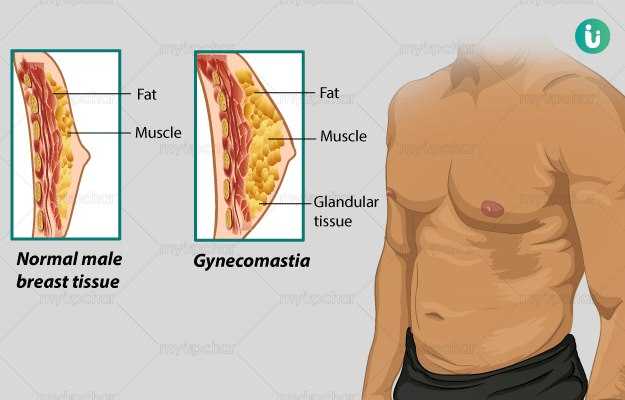Breast augmentation surgery is a significant step for many individuals seeking to enhance their appearance and boost their confidence. However, the recovery process, especially when it comes to sleeping, can be challenging. This guide will help you navigate the post-surgery period with ease, ensuring you get the rest you need for a smooth recovery.
Understanding Breast Augmentation Recovery
What to Expect During the Healing Process
After breast augmentation surgery, your body needs time to heal. Swelling, bruising, and discomfort are common in the initial days. It’s crucial to follow your surgeon’s instructions to ensure a smooth recovery. The first few weeks are critical as your body adjusts to the implants, and proper care can significantly impact the outcome.
- Swelling and bruising are normal.
- Follow your surgeon’s post-operative care instructions.
- Avoid strenuous activities during the initial recovery phase.
Importance of Proper Sleep for Recovery
Sleep is a vital component of the healing process. It allows your body to repair tissues and reduces inflammation. Ensuring you get enough rest can speed up recovery and improve your overall well-being. Lack of sleep can lead to increased pain and delayed healing, making it essential to prioritize rest.
- Sleep aids in tissue repair and reduces inflammation.
- Lack of sleep can delay healing and increase discomfort.
- Prioritize rest to enhance recovery outcomes.
Best Sleeping Positions After Breast Implant Surgery
Sleeping on Your Back with Elevation
Sleeping on your back is the recommended position after breast augmentation. Elevating your upper body with pillows can help reduce swelling and discomfort. This position minimizes pressure on the chest, allowing the implants to settle properly.
Book A Consultation With Dr Tarek Bayazid
Installment Plan Available
- Use pillows to elevate your upper body.
- Reduces pressure on the chest area.
- Helps implants settle correctly.
Using a Wedge Pillow and Body Pillows
A wedge pillow can provide the necessary support and elevation for your upper body. Body pillows can also be used to prevent you from rolling onto your side during sleep. These tools can make sleeping more comfortable and support your recovery.
- Wedge pillows offer support and elevation.
- Body pillows prevent rolling onto your side.
- Enhances comfort during sleep.
When to Transition to Side Sleeping
Transitioning to side sleeping should be done cautiously and only after consulting with your surgeon. Typically, this can be considered a few weeks post-surgery, once the initial healing phase is complete. Ensure you use pillows for support to avoid putting pressure on your chest.
- Consult your surgeon before transitioning.
- Use pillows for support when side sleeping.
- Typically safe a few weeks post-surgery.
How to Sleep After Breast Augmentation Surgery Timeline
First-Week Post-Surgery
The first week after surgery is crucial for recovery. Focus on sleeping on your back with elevation to minimize swelling and discomfort. Avoid any movements that may strain your chest area.
- Sleep on your back with elevation.
- Avoid movements that strain the chest.
- Focus on rest and recovery.
Weeks 2-4 After Breast Augmentation
During weeks 2-4, you may start feeling more comfortable. Continue sleeping on your back, but you can gradually reduce the elevation as advised by your surgeon. Monitor your body’s response and adjust accordingly.
- Gradually reduce elevation as advised.
- Monitor your body’s response.
- Continue prioritizing rest.
Long-Term Sleeping Habits
Long-term, you can return to your preferred sleeping position once fully healed. However, maintaining good sleep hygiene and using supportive pillows can enhance comfort and prevent complications.
- Return to preferred sleeping position once healed.
- Maintain good sleep hygiene.
- Use supportive pillows for comfort.
Preparing for Post-Surgery Sleep
Adjusting to New Sleep Positions Before Surgery
Before your surgery, practice sleeping on your back to get accustomed to the position. This can make the transition easier post-surgery and help you find the most comfortable setup.
- Practice back sleeping before surgery.
- Helps ease the transition post-surgery.
- Find a comfortable setup in advance.
Creating a Comfortable Sleep Environment
A comfortable sleep environment can significantly impact your rest quality. Ensure your bedroom is cool, quiet, and dark. Invest in quality bedding and pillows to support your recovery.
- Keep your bedroom cool, quiet, and dark.
- Invest in quality bedding and pillows.
- Enhances rest quality and recovery.
Choosing Appropriate Sleepwear
Opt for loose, breathable sleepwear that doesn’t put pressure on your chest. Soft fabrics can prevent irritation and enhance comfort during sleep.
- Choose loose, breathable sleepwear.
- Avoid pressure on the chest area.
- Soft fabrics prevent irritation.
Tips for Better Rest After Breast Enhancement
Gentle Movement and Stretching During the Day
Incorporate gentle movements and stretching into your daily routine to improve circulation and reduce stiffness. This can enhance your comfort during sleep.
- Gentle movements improve circulation.
- Reduces stiffness and enhances comfort.
- Incorporate into daily routine.
Practicing Relaxation Techniques
Relaxation techniques such as deep breathing or meditation can help calm your mind and body before sleep. This can improve sleep quality and aid in recovery.
- Deep breathing and meditation calm the mind.
- Improves sleep quality.
- Aids in recovery.
Avoiding Sleep Disruptors
Avoid caffeine, heavy meals, and electronic devices before bedtime. These can disrupt your sleep and hinder your recovery process.
- Avoid caffeine and heavy meals before bed.
- Limit electronic device usage.
- Prevents sleep disruption.
Managing Discomfort for Improved Sleep
Pain Management Techniques
Effective pain management is crucial for a comfortable sleep. Follow your surgeon’s recommendations for pain relief, and consider over-the-counter medications if necessary.
- Follow the surgeon’s pain relief recommendations.
- Consider over-the-counter medications.
- Ensures comfortable sleep.
Using Ice Packs and Compression Garments
Ice packs can help reduce swelling and numb pain, while compression garments provide support and minimize discomfort. Use these tools as directed by your surgeon.
- Ice packs reduce swelling and numbness.
- Compression garments provide support.
- Use as directed by your surgeon.
How to Sleep After Recovery Milestones
Transitioning to Normal Sleep Patterns
As you reach recovery milestones, you can gradually return to your normal sleep patterns. Listen to your body and make adjustments as needed to ensure comfort.
- Gradually return to normal sleep patterns.
- Listen to your body’s signals.
- Make adjustments for comfort.
Signs of Proper Healing During Sleep
Proper healing can be indicated by reduced pain and discomfort during sleep. If you notice significant improvements, it may be a sign that your body is healing well.
- Reduced pain indicates proper healing.
- Monitor improvements during sleep.
- Sign of successful recovery.
Potential Sleep Complications and Solutions
Addressing Post-Surgery Insomnia
Insomnia can be a common issue post-surgery. Establish a bedtime routine and create a relaxing environment to combat this problem.
- Establish a bedtime routine.
- Create a relaxing sleep environment.
- Helps combat insomnia.
Dealing with Nighttime Discomfort
If you experience nighttime discomfort, adjust your sleeping position or use additional pillows for support. Consult your surgeon if discomfort persists.
- Adjust sleeping position for comfort.
- Use additional pillows for support.
- Consult the surgeon if discomfort persists.
Dr. Tarek’s Recommendations for Post-Surgery Sleep
Personalized Sleep Plans for Patients
Dr. Tarek emphasizes the importance of personalized sleep plans tailored to each patient’s needs. These plans can enhance recovery and ensure optimal rest.
- Personalized sleep plans enhance recovery.
- Tailored to individual patient needs.
- Ensures optimal rest.
Follow-Up Care and Sleep Monitoring
Regular follow-up care and sleep monitoring are crucial for a successful recovery. Dr. Tarek recommends staying in touch with your healthcare provider to address any concerns.
- Regular follow-up care is crucial.
- Sleep monitoring aids in recovery.
- Stay in touch with healthcare provider.
Final Thoughts
Navigating sleep after breast augmentation surgery can be challenging but with the right strategies, you can ensure a smooth recovery. Prioritize rest, follow your surgeon’s advice, and make necessary adjustments to your sleep environment for the best results.
FAQs
How do you get comfortable sleeping after breast augmentation?
To get comfortable sleeping after breast augmentation, it’s essential to sleep on your back with your upper body elevated. This position reduces pressure on your chest and helps minimize swelling. Using supportive pillows can enhance comfort and aid in recovery.
Is it OK to sleep flat on your back after breast augmentation?
Sleeping flat on your back is generally not recommended immediately after breast augmentation. Elevating your upper body with pillows can help reduce swelling and discomfort. Consult your surgeon for personalized advice on sleeping positions.
How long after breast augmentation can I sleep normally?
You can typically return to normal sleeping patterns a few weeks after breast augmentation, once your body has healed sufficiently. It’s important to listen to your body and consult your surgeon for guidance on when it’s safe to resume your usual sleep positions.
Can I sleep on my side after breast implant surgery?
Sleeping on your side after breast implant surgery should be approached with caution. It’s usually safe to transition to side sleeping a few weeks post-surgery, but always consult your surgeon for personalized advice. Use pillows for support to avoid putting pressure on your chest.
When can I sleep without a bra after breast augmentation?
The timeline for sleeping without a bra after breast augmentation varies for each individual. Generally, it’s recommended to wear a supportive bra during sleep for several weeks post-surgery. Consult your surgeon for specific guidance based on your recovery progr








